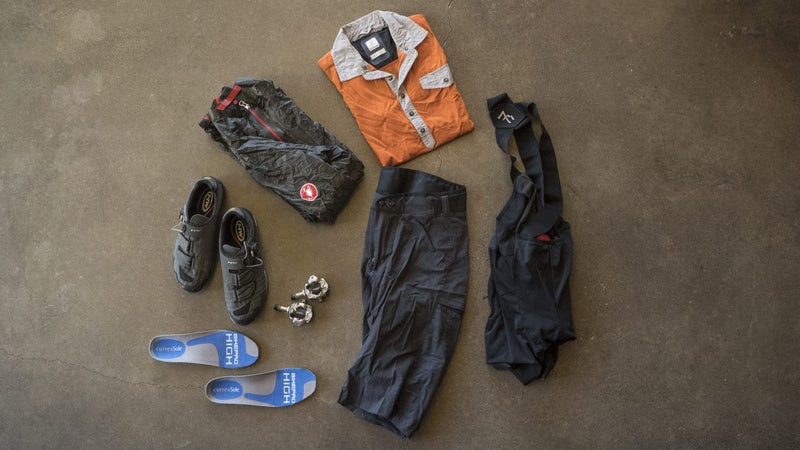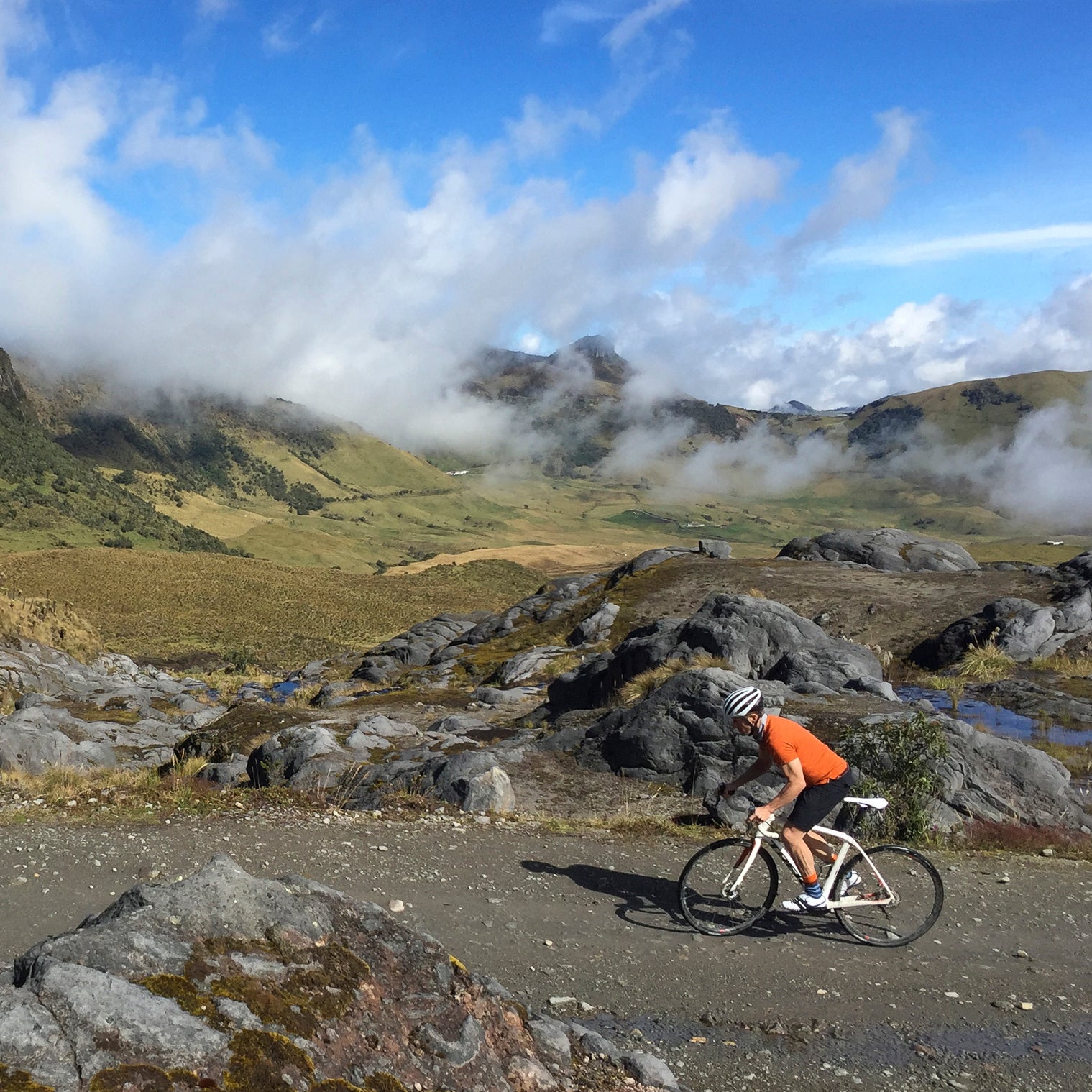A few weeks ago, I traveled to Colombia to sample the country’s road riding. In terms of cycling, this is a country whose time has come. It’s edging toward a lasting peace, and its pro cyclists are swarming the top echelon of racing, with Giro and Vuelta winner Nairo Quintana leading the pack. There’s also Esteban Chavez, who nabbed two grand tour podiums in 2016; Rigoberto Úran, a perennial contender; up-and-comer Miguel Ángel López, who grabbed wins last year at the Tour de Suisse and Milano-Torino; and Carlos Betancourt, who has shown flashes of Grand Tour–winning brilliance.
After what I saw on my ten-day tour, Colombia’s success is no surprise. The two main cycling hubs, Bogotá and Medellín, are at 8,700 and 4,900 feet, respectively, meaning cyclists here are constantly training at altitude. More important, the road riding is grandiose, with regular 30-mile climbs and sweeping descents on two-lane roads. It’s as if God pointed his finger, zapped these hills, and said, “If you can pass through this groaning country on two wheels, you’ll probably make a pretty good bike racer.”
Packing for the trip felt almost as difficult as the riding. Little information is available about the routes and conditions, and few tour companies operate here. ( and , both of which I met while traveling, are reputable local providers and excellent resources.) The diverse conditions also pose challenges, as our rides ranged from steamy, jungle heat at 800 feet above sea level to sub-freezing rain and snow over 13,000 feet. After thinking long and hard on what gear to bring for such a wild and varied trip, I decided that the following items were indispensable—both for Colombia and any road tour in an intrepid setting.

The Bike
I’ve written widely about the evolution of road bikes that fit wider tires and thus create a more comfortable ride. The carbon fiber ($6,500) is the paragon of this niche. The breadth of terrain we rode demanded a versatile bike: the high mountain climbs recommended a light climbing machine, the sometimes pocked and pitted asphalt argued for comfort and against too feathery, and the mix of asphalt and gravel roads meant that super-skinny tires would likely founder. The Domane was the perfect balance, with clearance for big tires and decouplers in the front and rear of the frame to take the edge off the rough. Yet, at just a little over 18 pounds, this bike was plenty snappy and light for hours of climbing. On group days over pavement, I could dial up the rear-end stiffness for an even punchier ride.
Anyone who decries disc brakes need only spend 30 miles descending in wet conditions, as we did one day, to realize just how superior they are to rim models. The tubeless 32c slick tires did admirably well, even on some 20-mile stretches of rock-scarred dirt roads. (If I were to make one change for next time, I’d probably either choose an even wider slick, say 38c, or pack a set of knobbies like the Specialized Trigger for days that were predominantly on dirt.)
Trek has built what is surely the most versatile road bike around—the perfect compromise between a hard-edged racer and full-fledged gravel machine. I am convinced that there’s currently no better all-around road bike on the market.
The Shoes
Given that our route was composed of large swaths of dirt and gravel, a durable mountain pedal made sense: the ($60) is tried and true, and SPDs are probably the most common setup on the planet should you need spare parts. I also like the recessed-cleat arrangement, which means you can run a knobby-soled shoe like the ($140) so you’re not slipping and crashing around cobbled plazas and forest roads on raised road cleats when you get off the bike.
These shoes pack high-end features—a spin-dial closure for fine-tuning the fit, a variable-stiffness sole for just the right balance between pedaling and walking performance, and a sticky Michelin rubber outsole—all in a surprisingly economical package. That’s another thing I consider when traveling: I don’t like to bring my most expensive gear, lest the airlines lose it or I forget something in a hotel room. Along those lines, I subbed out the Northwave insoles with a set of ($50) instead of my custom orthotics. The fit-specific design provides much more structure and support than the stock models in 90 percent of cycling cleats, but they don’t cost a fortune.
The Kit
For touring, I wouldn’t trade my ($130) for anything. This collared, polo-style top is packed with technical features that keep you comfy on the bike—ventilation across the shoulders, a gripper bead at the waist, a rear zip pocket for stowing small gear, and a tethered glasses wipe in the pocket—yet it’s put together enough for a post-ride interview with the mayor. Even after a week of riding, the stretch merino wool felt soft on the skin and didn’t stink. Similarly, the ($165) is one of the most durable, hard-working pair of travel baggies, built from a fast-drying lightweight nylon and cut below the knee for when you get to the city.
I paired them with the ($200), which has become my go-to for touring because the low-profile pad is comfy enough for a full day in the saddle but not so bulky that it shows. The only truly expensive piece of kit I brought along—and one I never leave home without—was the ($350). Using the latest iteration of Gore Active, this stripped-down shell is so feathery (120 grams) and small that it folds up to about the size of an energy bar, ensuring you’re never caught without full waterproof protection. And, yes, it (barely) fits in the Rudy’s stow pocket.


